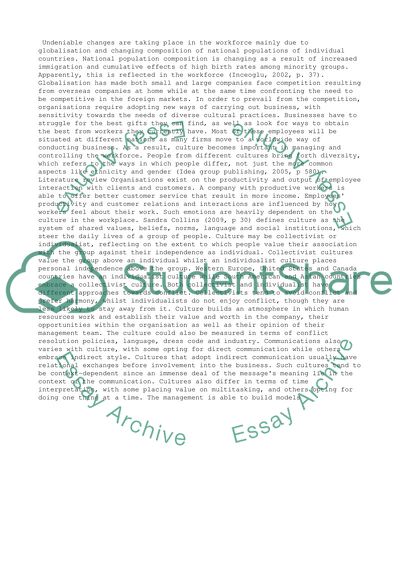The Importance of Culture for Managing and Controlling the workforce Literature review. Retrieved from https://studentshare.org/management/1466575-the-importance-of-culture-for-managing-and
The Importance of Culture for Managing and Controlling the Workforce Literature Review. https://studentshare.org/management/1466575-the-importance-of-culture-for-managing-and.


